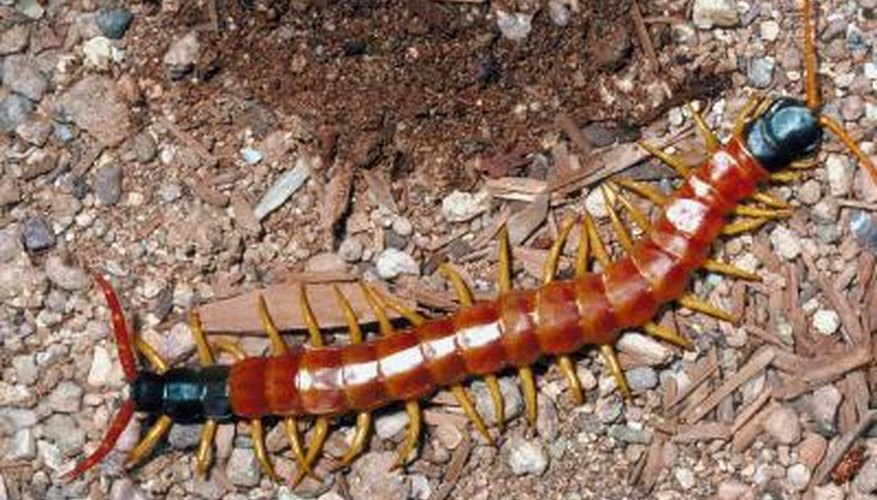If you have found what look like small red worms in your home, you most likely have a centipede problem. Often mistaken for worms, centipedes are characterised by their small wormlike appearance and brown or red coloured bodies. Actual red worms, by contrast, are not small, as they average 5 inches in length. They also do not dwell in homes and are typically only used for composting. The most common house centipedes are only a few millimetres in length, while the more rare, larger ones are up to 1.2 inches long. Centipedes dwell in dark, damp areas but can also be found in bedding.
Centipedes Aren't Usually Dangerous
Many small centipedes cannot puncture human skin. A bite from a larger centipede is comparable to a bee sting and is not dangerous unless the individual is allergic to the venom. It can be very painful and cause swelling, but it is nontoxic and not fatal in most cases. However, an individual who is allergic to centipede venom can experience anaphylactic shock.
- Many small centipedes cannot puncture human skin.
- A bite from a larger centipede is comparable to a bee sting and is not dangerous unless the individual is allergic to the venom.
Causes of a Centipede Problem
There are two common reasons why centipedes will enter your home: You have an undiscovered pest problem or you have a damp, dark area where they might live. Centipedes eat other small insects such as termites, silverfish, bed bugs and ants. If you suddenly see centipedes, they may be coming to eat the other pests living in your home. They can get into areas in your home that are out of sight and infested with other insects. Basements are common dwelling spaces for centipedes because they are usually dark and sometimes damp, and centipedes can often live undisturbed there.
- There are two common reasons why centipedes will enter your home: You have an undiscovered pest problem or you have a damp, dark area where they might live.
Centipedes in Bedding
Although centipedes tend to dwell in moist places, they also appear in bedding. Beds are often warm and undisturbed during most parts of the day. They are also a breeding ground for bed bugs, which centipedes eat. If you find centipedes in your bed, you might have a bed bug infestation.
- Although centipedes tend to dwell in moist places, they also appear in bedding.
How to Get Rid of Centipedes
The best and most efficient way to get rid of centipedes in your home is to call an exterminator. She will be able to track down the source of the centipede problem and get rid of them. If you want to get rid of the centipedes yourself, place a dehumidifier in the dark, damp parts of your house. This will make the area too dry for the centipedes. Or you can place a bug trap in the centre of a moist piece of cardboard and put the cardboard where you are seeing centipedes. The moisture from the cardboard will attract the centipedes and the trap will kill them. If you find centipedes in your bed, you may have bed bugs. Change all linen on the bed and vacuum or replace your mattress. You may also want to purchase bed bug powder.
- The best and most efficient way to get rid of centipedes in your home is to call an exterminator.
- Or you can place a bug trap in the centre of a moist piece of cardboard and put the cardboard where you are seeing centipedes.
